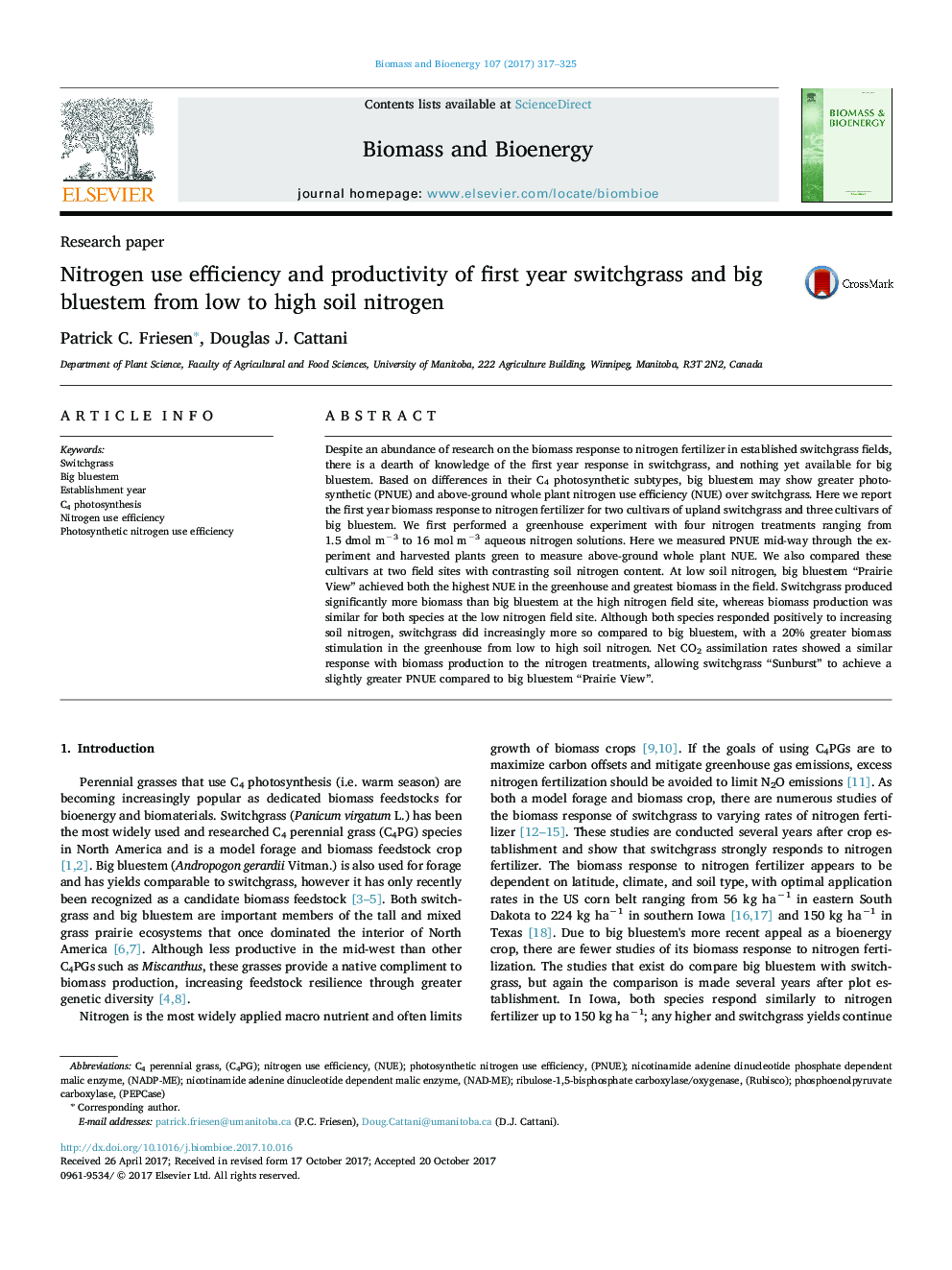| Article ID | Journal | Published Year | Pages | File Type |
|---|---|---|---|---|
| 7063108 | Biomass and Bioenergy | 2017 | 9 Pages |
Abstract
Despite an abundance of research on the biomass response to nitrogen fertilizer in established switchgrass fields, there is a dearth of knowledge of the first year response in switchgrass, and nothing yet available for big bluestem. Based on differences in their C4 photosynthetic subtypes, big bluestem may show greater photosynthetic (PNUE) and above-ground whole plant nitrogen use efficiency (NUE) over switchgrass. Here we report the first year biomass response to nitrogen fertilizer for two cultivars of upland switchgrass and three cultivars of big bluestem. We first performed a greenhouse experiment with four nitrogen treatments ranging from 1.5 dmol mâ3 to 16 mol mâ3 aqueous nitrogen solutions. Here we measured PNUE mid-way through the experiment and harvested plants green to measure above-ground whole plant NUE. We also compared these cultivars at two field sites with contrasting soil nitrogen content. At low soil nitrogen, big bluestem “Prairie View” achieved both the highest NUE in the greenhouse and greatest biomass in the field. Switchgrass produced significantly more biomass than big bluestem at the high nitrogen field site, whereas biomass production was similar for both species at the low nitrogen field site. Although both species responded positively to increasing soil nitrogen, switchgrass did increasingly more so compared to big bluestem, with a 20% greater biomass stimulation in the greenhouse from low to high soil nitrogen. Net CO2 assimilation rates showed a similar response with biomass production to the nitrogen treatments, allowing switchgrass “Sunburst” to achieve a slightly greater PNUE compared to big bluestem “Prairie View”.
Keywords
Related Topics
Physical Sciences and Engineering
Chemical Engineering
Process Chemistry and Technology
Authors
Patrick C. Friesen, Douglas J. Cattani,
